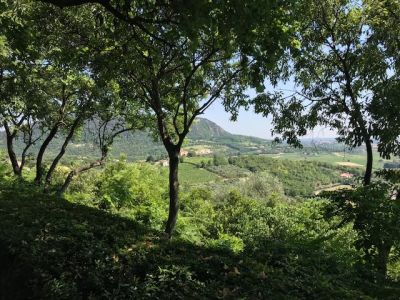Mai come prima, il tema dell’ecoturismo sostenibile si è fatto più urgente ed in tempi relativamente recenti questo tipo di turismo ha vissuto una crescita molto importante. Concedersi una vacanza “green” significa abbandonare lo stress per dare spazio a nuove esperienze nel rispetto della natura. A spingere circa la metà degli italiani ed un numero sempre crescente di stranieri verso mete ecosostenibili in Italia, è una maggiore consapevolezza del proprio impatto sull’ambiente, il desiderio di conoscere le tradizioni culturali ed enogastronomiche locali, di entrare in contatto con la natura e dedicarsi al benessere psico-fisico personale praticando attività sportive, ma anche di contribuire al sostegno dell’economia e dello sviluppo locale facendo escursioni con guide locali alla scoperta di aree protette o borghi storici. Il Bel Paese, dunque, dimostra di essere sempre più attento all’ambiente e di aver colto l’importanza e i vantaggi dell’ospitalità ecosostenible, accorciando in tal modo il divario con i Paesi europei più in questo senso all’avanguardia.
First, Italy invented “Slow Food” with its high-quality, good value, local ingredients cooked and served with love. Now, we have “Slow Tourism” founded on the same principles of in-depth, local, quality experiences. Eco-friendly holidays are becoming more and more popular in Italy.
The Veneto is probably the most visited region of Italy. Certainly, Venice is so congested at times that sheer numbers destroy the very thing tourists have travelled to admire. But local initiatives are changing the way we visit this region. Cycling, boating and walking tours (which have minimum impact on the environment) give visitors the opportunity to get to know the people and to understand the local economy with trips to vineyards, olive presses, farms, etc.
It is no coincidence that the Prosecco Hills have become a World Heritage site. This lovely area between the North Italian Plain and the Dolomites, from Conegliano to Valdobiadene, is still unknown as a tourist destination. The gentle slopes covered with vineyards lend themselves to holidays with a slower pace, either walking or cycling, and the many farms offering bed and breakfast ensure that it is the local economy which is supported rather than giant tour companies.
One ristorante in the area offers a 4-course cheese menu which is quite amazing. The main course has a large plate with different local cheeses arranged like a clock around it, getting stronger as you move clockwise. The server will point out which farm each cheese came from, as they can all be seen from the restaurant's vantage point on the hillside. The idea is that happy diners will then visit the farms where their favorite cheeses were made and purchase some.
Also not to be missed is Valdobbiadene's Prosecco festival in September. You won't find many foreign tourists in the marquee where each place setting has a semicircle of 13 glasses to taste all the local sparkling wines, but as an off-the-beaten-track tourist you will be welcomed and encouraged to buy local. These are experiences to treasure as they also sustain a traditional way of life.
Small operators who offer this more relaxed kind of tourism can be found in most of the towns in the Veneto. From Verona, you can join cycling groups exploring the area around Lake Garda along ancient pathways. Tourist packages to this popular destination won't afford you the chance to meet locals or sample their produce unless you delve deeper and sign up with guides who are intimately tuned in to the place and its people.
Local eco-tour companies allow sporty types the challenge of cycling from the Dolomites to the Adriatic, with routes to suit all abilities and accommodations and luggage all arranged in advance. The rewards are obvious: a sense of achievement while becoming directly acquainted with an area instead of observing it through a tour bus window as you speed by.
Another novel option is a cycle holiday along tow paths with a floating barge hotel, returning for dinner on board. This is much more intimate than a group package purchased through a giant tourist company far from the Italian region where you are staying that leads you to the “must-see” sights with hundreds of other tourists.
This same principle applies to the cruise ships of Venice where many passengers do not even bother to disembark. The impact on the environment is hugely destructive and rightly condemned. The caring modern tourist wants a lighter, reciprocal touch, putting as much back into the economy as is taken out in enjoyment.
Ca' Foscari, the University of Venice, offers grants to small companies with projects for sustainable tourism. One such award was used to establish small tours in the Euganean Hills, making use of the local rowing club to row tourists to Catajo Castle in traditional caorle boats instead of arriving by car and parking alongside hundreds of others. Other options include trips on a bragozzo, an adapted fishing boat, to take travelers to the lesser-known islands of the Venetian Lagoon such as San Francesco Del Deserto. Rowing, of course, like cycling and hiking, involves no fuel, no pollution and supports local ways of life.
However, cycling continues to be the best option for the environmentally-aware tourist. Bikes can be delivered to Marco Polo airport or in Venice to Piazzale Roma or Tronchetto where the ferries dock, or any city or hotel in the area. Popular cycling holidays include the villas along the Brenta Canal or even cycling from Venice eastwards via Trieste to the Istrian Peninsula, then back by ferry to Venice (luggage can be delivered along the route).
Autumn is the ideal season for active holidays. Milder weather is less exhausting for cycling and walking. The vineyards look at their very best with stripes of red, yellow and brown running across the hillsides and most of the tourists will have gone home. The pace of life slows down, with time to enjoy an in-depth visit instead of the superficial whirlwind tourism which leaves you with nothing of substance to remember.



